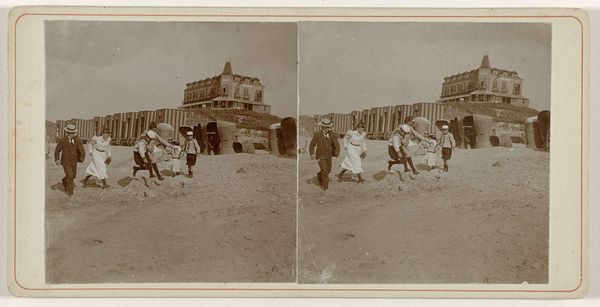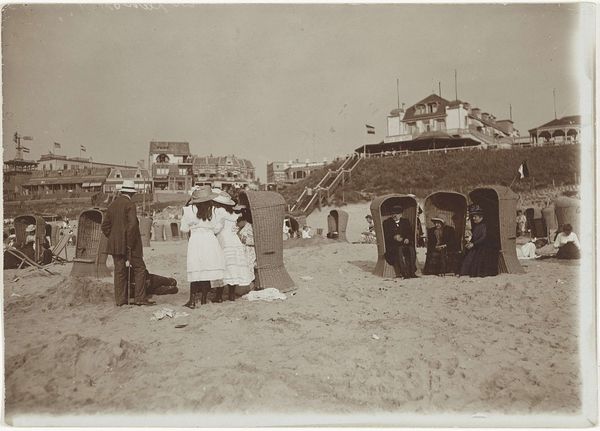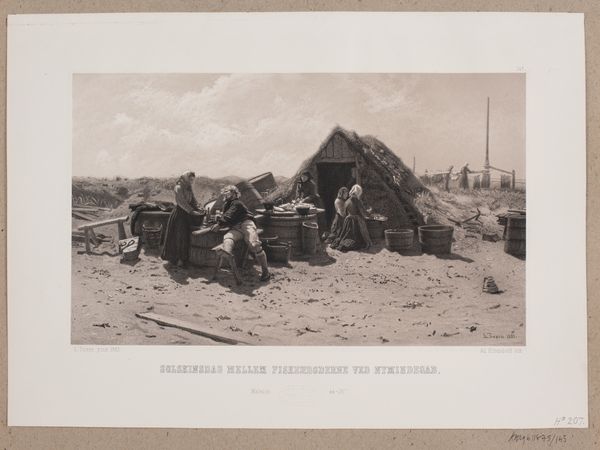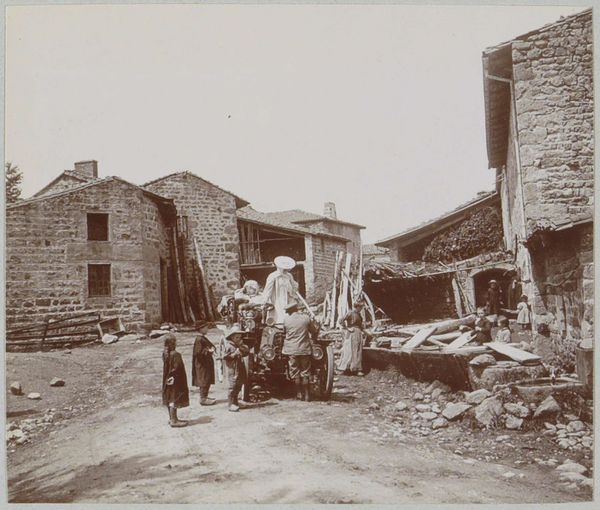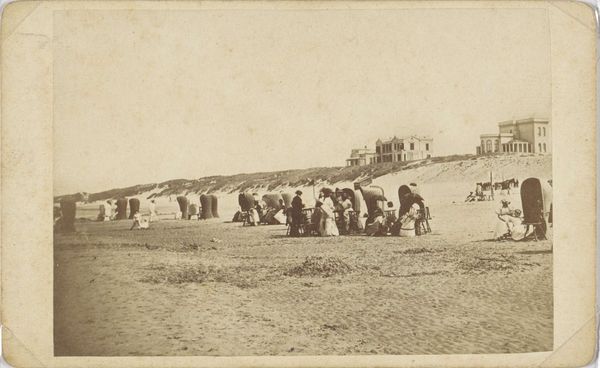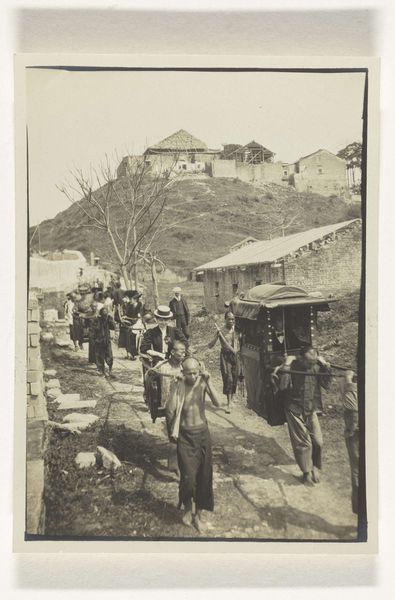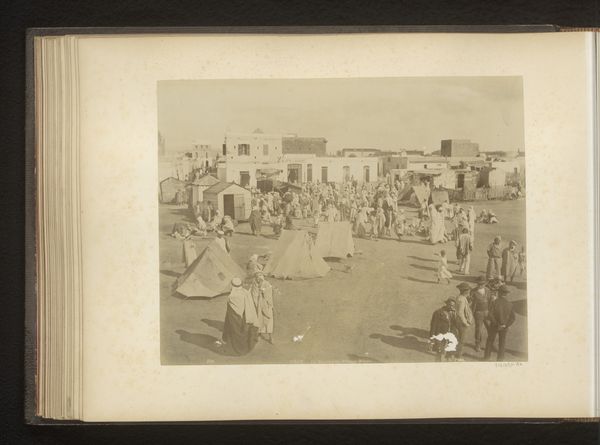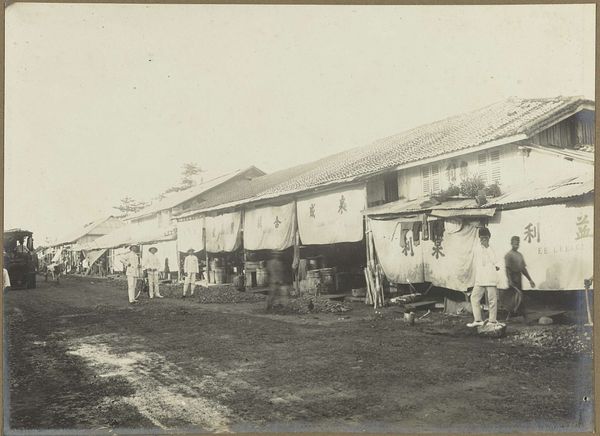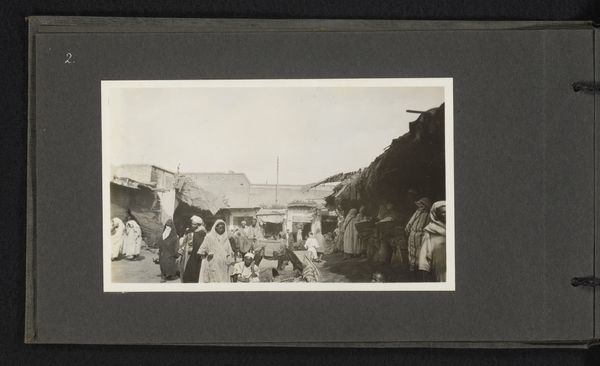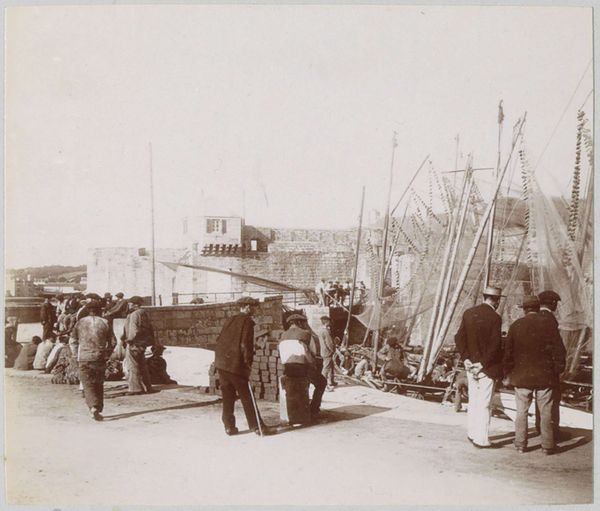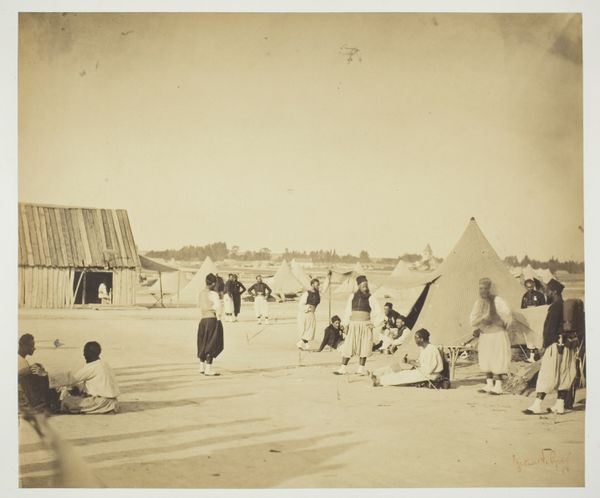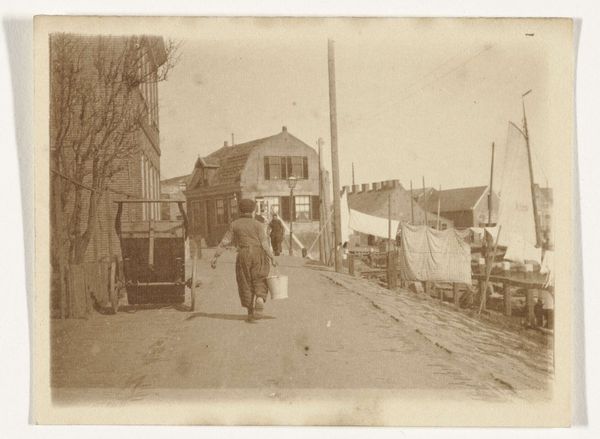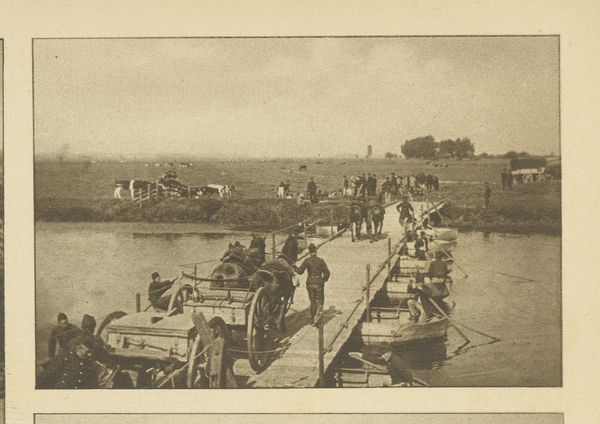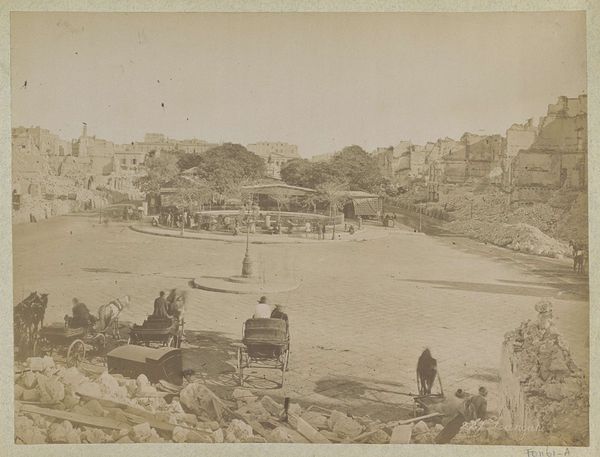
photography, gelatin-silver-print, albumen-print
#
portrait
#
16_19th-century
#
landscape
#
photography
#
coloured pencil
#
gelatin-silver-print
#
19th century
#
genre-painting
#
albumen-print
Dimensions: height 126 mm, width 82 mm
Copyright: Rijks Museum: Open Domain
Curator: The photograph before us, attributed to A. Bakels Sr., is titled "Mensen en ezel op het strand van Zandvoort," placing us on the beach in Zandvoort around 1890 to 1900. Editor: It feels strikingly staged, despite its ostensible subject. There's a studied arrangement of figures and forms against the backdrop of a beachside resort. A kind of rigid tableau. Curator: The composition is indeed noteworthy. Bakels utilizes the gelatin-silver print medium to capture a moment in time, but that time reflects broader social currents. The beach, previously a liminal space, becomes a site of leisure, controlled and consumed. Editor: Precisely. The eye is led back from the pools of water in the foreground, past the groupings of people, to the imposing structure of the 'Hotel d'Orange', elevated almost like a civic monument. This creates a kind of artificial diorama, suggesting an evolving relationship between human activity, the natural world and commerce. Curator: It is indicative of the democratizing effect of leisure. Although class divisions still exist, as we can infer from the attire of the subjects and the backdrop of luxury, the beach itself becomes a meeting ground. Editor: I'm particularly struck by the way light is managed. There is a deliberate, almost theatrical illumination, focused on certain figures. Is it drawing attention to certain narratives, reinforcing social structures even as the image documents something new? The inclusion of the donkey seems deliberately ironic as well; what new role does that old beast of burden play in this theatre? Curator: The albumen print offers us a direct portal to understanding a pivotal time in history, where ideas of tourism and leisure began to proliferate. The image itself becomes part of a feedback loop, shaping and promoting this new form of recreation. Editor: Considering it again, I still can't shake the impression that this is not a mere 'snapshot' of reality. The very act of its creation becomes part of a process in redefining social behaviour. The photographic construction serves a much more calculated symbolic end. Curator: A keen observation, one that suggests this photograph should be understood within a context that acknowledges not just documentation, but its social function within late 19th century society.
Comments
No comments
Be the first to comment and join the conversation on the ultimate creative platform.
